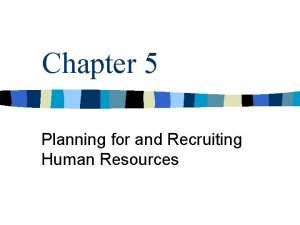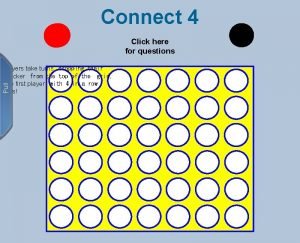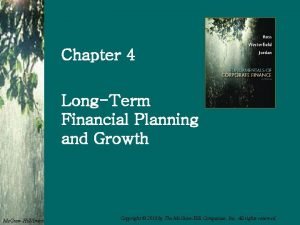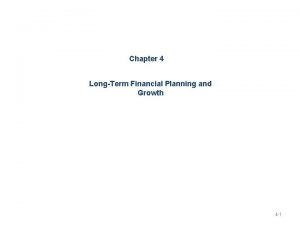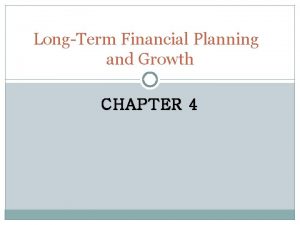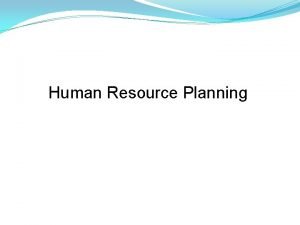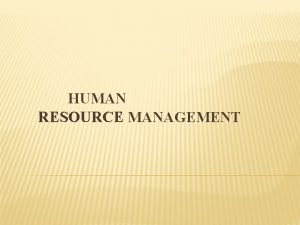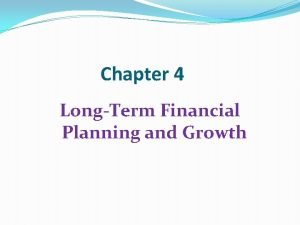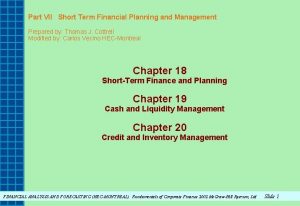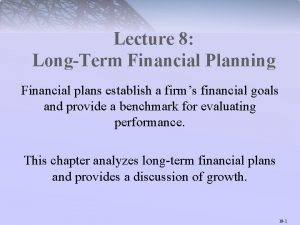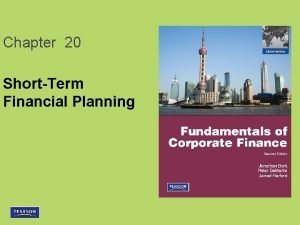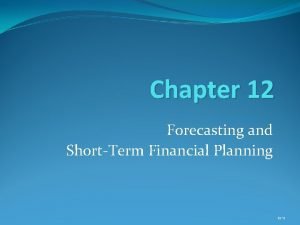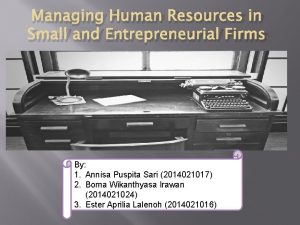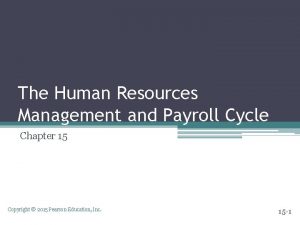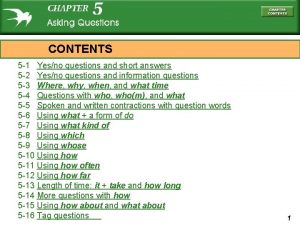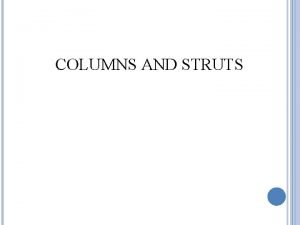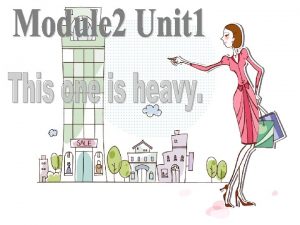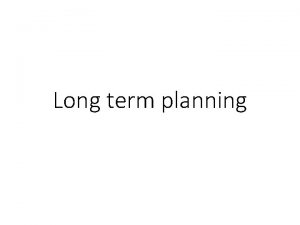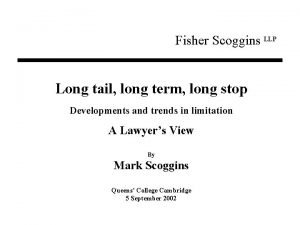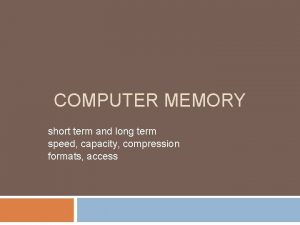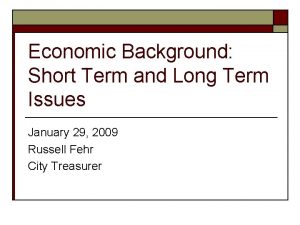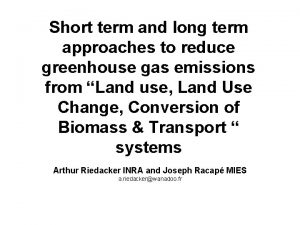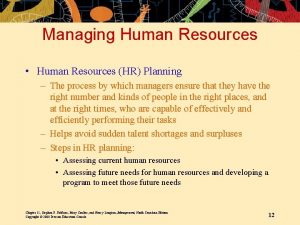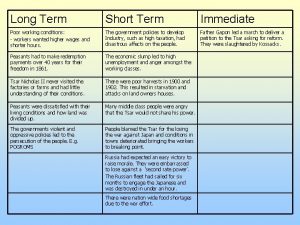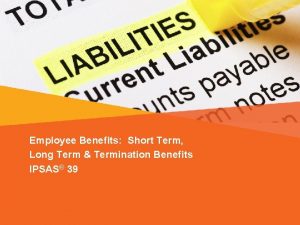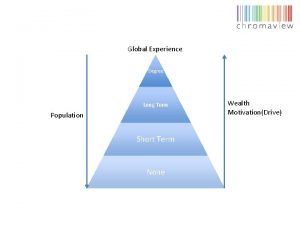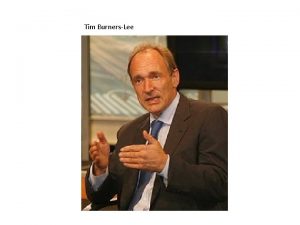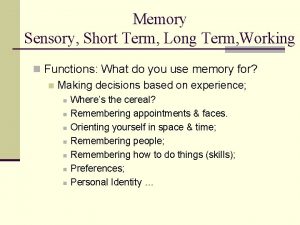Human resources planning long term and short term













































- Slides: 45

Human resources planning (long term and short term) and strategies to successful implementation Deependra Bickram Thapa

What? q. The process by which an organization ensures that it has the right number and right kinds of people, at the right place and at the right time, capable of effectively and efficiently completing those tasks that will help the organization achieve its overall objectives. hr planning: dbthapa 2

q. Human resources planning translates the objectives and plans of the organization into the number of workers needed to meet those objectives. hr planning: dbthapa 3

q. Also it is a process of determining and assuring that the organization will have an adequate number of qualified personnel available at the proper times and performing jobs which meet the needs of the enterprise and which provides satisfaction to the individual involved hr planning: dbthapa 4

q. Human resources planning is an on going process q. It is a dynamic concept and requires modifications and updating as per the need of the time. q. It includes the planning and development of human resources programs ranging from pre-recruitment to post retirement. hr planning: dbthapa 5

Rationale 1. Meeting future personnel needs 2. Coping the change in: üCompetitive force üMarkets üTechnology üProducts and üGovernment regulations hr planning: dbthapa 6

3. High talent person: ü There always is the lack of talent people. ü The lead time to hire and develop such personnel is long. ü It requires long range career development and counseling planning. hr planning: dbthapa 7

4. Strategic planning ü This is one of the essential components of strategic management. ü Without human resources planning, strategic planning of an organization becomes incomplete and doubtful. ü Strategic planning and human resources planning go side by side hr planning: dbthapa 8

5. Equal employment opportunity ü Affirmative action policy and plans, quota and reservation need upgrading of certain protected groups and communities. ü These policy and plans must be implemented while hiring, promoting transferring, training and compensating and so forth functions of human resources management. hr planning: dbthapa 9

6. Government contracts ü Governments hire public services from a number of NGOs and companies. ü To win the government contracts, they must supply the human resources information to the government. ü Obviously to be competitive, they must plan and develop appropriate human resources hr planning: dbthapa 10

7. Foundation for personnel functions ü Human resources planning provides essential and vital information for designing and implementing personnel related functions ranging from prerecruitment to post retirement together with training and personnel development. hr planning: dbthapa 11

8. Succession planning ü Who will replace the retiring chief executive? ü From what pool of personnel, the upper class of executives be drawn? ü How will these persons be groomed to assume the higher responsibilities? hr planning: dbthapa 12

The planning period: short term or long term Moot question: How far into the future shall we plan human resources needs? ü Some business enterprises plan for ten to fifteen years while some, one to three years. ØDepends upon the nature and type of services that an organization produces ØAlso fundamentally on the extent and rapidity of change in the forces affecting the business determines the utility of forecasts into the future hr planning: dbthapa 13

ü Some business companies like electrical utilities, potable water projects, oil companies and telephone companies plan for ten to fifteen. ü Some establishments can and should tie their forecasts directly into population growth trends- public schools, postal services and public utilities- hence, longer range planning is feasible hr planning: dbthapa 14

ü For the business like women’s fashion for instance is exposed to so much of uncertainty that planning and forecasting for more than a season or two will be a fraught with risks ü In general, human resources planning for one year is short term, two to four years is intermediate and for five and beyond is long range. hr planning: dbthapa 15

Planning process q. Purpose ü To assess where the organization is, where it is going, and what implications these assessments have on future supplies of and demands for human resources ü Attempts must be made to match supplies and demands, making them compatible with the achievement of the organization's future needs hr planning: dbthapa 16

Planning process 1. Assessing current human resources ü Developing the profile of the current human resources ü An internal analysis that includes an inventory of the workers and skills already available within the organization and a comprehensive job analysis. hr planning: dbthapa 17

Two kinds of human resources inventories I. General inventory: The report contains üList of names üEducation üTraining üPrior employment üCurrent position üPerformance ratings hr planning: dbthapa 18

üSalary levels üLanguages spoken üCapabilities üSpecialized skills üAge üLocation hr planning: dbthapa 19

ü This report is important to provide the current skills availability ü This can also be used for other personnel activities like training, education, transfer, providing greater responsibilities, promotion, course design and so forth hr planning: dbthapa 20

II. Executive inventory (Succession planning) q. Middle managers and top executive positions listed q. Against this list of positions, can be placed the individual manager’s inventory to determine if there is sufficient managerial talent to cover both expected and unexpected hr planning: dbthapa 21

Ø Human resources information system ü Computer can be utilized and HRIS could be created Ø Job analysis üJob description üJob specification üJob evaluation hr planning: dbthapa 22

Job analysis Job descriptions Job specifications Job evaluations hr planning: dbthapa 23

2. Assessing where the organization is going ü The organization's objectives and strategies for the future determine future human resources needs ü The number and mix of human resources are a reaction to the overall organizational strategy hr planning: dbthapa 24

üDemand for human resources is a result of demand for the organization’s products or services üAlso to cater the emerging and future needs and challenges hr planning: dbthapa 25

ü Future demand Based on the future direction of the organization in terms of revenue forecast and other plans and programs, projection of future human resource needs can be developed hr planning: dbthapa 26

q. Basis of ascertaining future demands 1. Judgment and experience ü Supervisors and managers of various units ü Make estimate specially for short term forecast based on their experience and judgment. hr planning: dbthapa 27

11. Budgetary planning ü Budgetary planning for a year forces managers to itemize the various categories of personnel in detail and in aggregate ü This plan forces them to see through their plans to justify HRM plan for the higher management hr planning: dbthapa 28

111. Work standard data ü Person hours or unit times to perform many direct production tasks as well as some maintenance and clerical activities ü But could not be used for professional, administrative and executive personnel job. hr planning: dbthapa 29

IV. Key predictive factors üLabor intensive vis-a-vis capital intensive üNumber of clients served üProductivity of the enterprises üSeasonal variations üDemand of the goods or services q. Statistical and operational research techniques used for HR forecasts hr planning: dbthapa 30

V. Management succession planning ü Also named management progression forecast or management replacement planning ü Filling the managerial vacancies through promotion from within. ü Regular performance appraisal system and assessment center data could be used ü However, this has a risk as designating people as the crown princes or heir apparants may reduce morale of others or gives the message that it is already fixed through political connections hr planning: dbthapa 31

I. A better approach is to identify a pool of managers having good potential for advancement. II. Then be given special training and developmental assignments in accordance with their interests and organizational opportunities III. None in the pool are given a claim upon a specific higher level job IV. All are given opportunities to qualify for a number of jobs should they open. hr planning: dbthapa 32

ü Future supply Ø Also requires the preparation for the estimation of supply of people Ø The first part is an estimation of the numbers and types of employees presently on the pay roll hr planning: dbthapa 33

Ø The supply of that portion which should be recruited externally Ø Developing the human resources Ø Reaching at the sources Ø The net requirement= Existing required hr planning: dbthapa 34

Implementation strategy of HR Plan This phase covers: I. Recruitment, selection and placement II. Performance appraisal III. Career development IV. Motivation and development V. Promotion, transfer and retirement VI. Audit and adjustment hr planning: dbthapa 35

Essentials of strategic implementation 1. Recruitment, selection and placement ü Presence of well thought recruitment, selection and placement policy ü Must identify potentially good sources of supply and must exhibit efforts to attract them ü Pooling of maximum number of candidates as a desirable step ü Recruitment process in line with the principles of meritocracy to win the confidence of the people ü Recruiting agency exhibiting positive interest hr planning: dbthapa 36

Essentials of strategic implementation ü Positions being identified by scientific approaches like job analysis ü Required steps being followed to make rational decision for selection ü Standardized selection criteria ü Validated and updated selection processes through researches ü Matching individual job preferences and qualifications with organizational needs while placement decisions made hr planning: dbthapa 37

11. Performance appraisal ü Performance appraisal used for twin purposes; a. promotion, pay increase, transfers and discharge b. employee development including self improvement, training and special broadening assignments ü Achievement and benefit oriented performance evaluation system hr planning: dbthapa 38

111. Career development ü Rather than random movements, progressive career development systems that focuses on both individual career planning and organizational career planning integrated hr planning: dbthapa 39

1 V. Promotion, transfer and retirement i. Clear and transparent policy ii. Predictable system of promotion and transfer iii. Promotion and transfer linked with results or achievement iv. Attractive retirement benefit v. Provision of second career for those who are best performer hr planning: dbthapa 40

V. Training and development q. Need based training and development linked with career q. Well designed training and development activities q. Well designed induction and socialization program for new comers hr planning: dbthapa 41

VI. Motivation and compensation q. Success of HR plan largely contingent on it q. Recruiting and retaining depend on this q. Competitive rates be offered q. Both financial and non-financial incentives used as these complement each other. hr planning: dbthapa 42

V 11. Audit and adjustment ü Measuring the planned achievement with the actuality ü What changes are necessary as some time plan may not result intended results because of change of conditions or some of original assumption may prove wrong hr planning: dbthapa 43

Conclusion ü HR plan must be linked with the overall plan of the organization ü Sound human resources planning recognized central to organizational success ü Human resources treated as more than means of production ü HR planning is full of “shoulds” and “shoulds” must be backed by effective forecasting techniques supported by concrete actions hr planning: dbthapa 44

üBest of luck hr planning: dbthapa 45
 Short short short long long long short short short
Short short short long long long short short short Short medium and long term planning in education
Short medium and long term planning in education Short term human resources examples
Short term human resources examples Short term and long term cash forecasting
Short term and long term cash forecasting Difference between long term and short term liabilities
Difference between long term and short term liabilities Difference between long term and short term liabilities
Difference between long term and short term liabilities Long-term goals examples
Long-term goals examples Long term memory vs short term memory
Long term memory vs short term memory Chapter 5 human resource planning and recruitment
Chapter 5 human resource planning and recruitment Once upon a time there lived a little girl name
Once upon a time there lived a little girl name Pull questions
Pull questions Long term financial planning and growth chapter 4
Long term financial planning and growth chapter 4 Chapter 4 long term financial planning and growth solutions
Chapter 4 long term financial planning and growth solutions Long term financial planning and growth
Long term financial planning and growth Meaning of manpower planning
Meaning of manpower planning Geister meaning
Geister meaning Long term financial planning process
Long term financial planning process Long term financial planning
Long term financial planning Definition of manpower planning
Definition of manpower planning Long term financial planning model
Long term financial planning model What is short term financial planning
What is short term financial planning Short term financial planning process
Short term financial planning process Manpower planning introduction
Manpower planning introduction What is the transformative process of operations management
What is the transformative process of operations management Differentiate fixed resources and variable resources
Differentiate fixed resources and variable resources Renewable resources vs nonrenewable resources
Renewable resources vs nonrenewable resources Human resource and job design in operations management
Human resource and job design in operations management Managing human resources in small and entrepreneurial firms
Managing human resources in small and entrepreneurial firms Chapter 8 human resources culture and diversity
Chapter 8 human resources culture and diversity Chapter 8 test human resources culture and diversity
Chapter 8 test human resources culture and diversity Managing human resources in small and entrepreneurial firms
Managing human resources in small and entrepreneurial firms Human resource management question papers with answers
Human resource management question papers with answers Managing human resources in small and entrepreneurial firms
Managing human resources in small and entrepreneurial firms Human resources training and development
Human resources training and development Dg human resources and security
Dg human resources and security Human resource and payroll cycle
Human resource and payroll cycle Props of tinikling
Props of tinikling Long long ago when the gods and goddesses
Long long ago when the gods and goddesses Long run in perfect competition
Long run in perfect competition Short division vs long division
Short division vs long division Long waves and short waves
Long waves and short waves Difference between short case and long case
Difference between short case and long case Long hedge and short hedge
Long hedge and short hedge Short division vs long division
Short division vs long division Answer
Answer Crippling load definition
Crippling load definition








